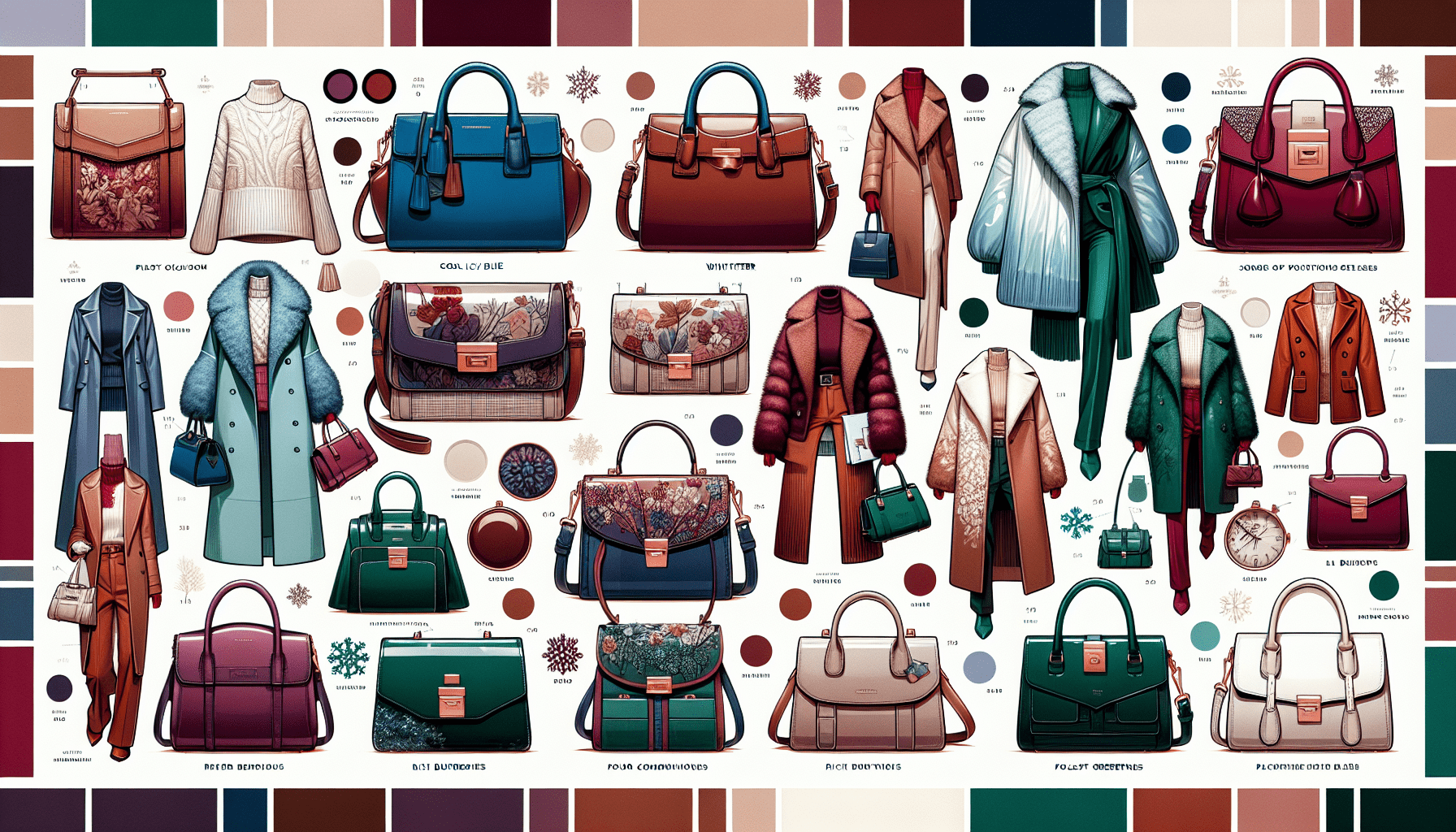How To Attach Sleeping Bag To Backpack
So, you’ve got your backpack packed and ready for your next outdoor adventure, but you’re wondering how to securely attach your sleeping bag. Don’t worry, we’ve got you covered! In this article, we will walk you through the simple steps on how to attach your sleeping bag to your backpack, ensuring it stays put and doesn’t take up valuable space inside your pack. By following these easy instructions, you’ll be able to hit the trails with confidence, knowing that your sleeping bag is securely attached and easily accessible whenever you need it. So, let’s get started on this practical and essential backpacking skill!
Choosing the Right Sleeping Bag
When it comes to backpacking, a good night’s sleep is essential for a successful trip. One of the key factors in achieving a comfortable sleep is choosing the right sleeping bag. To ensure you select the perfect one, there are a few things you should consider.
Consider the season and weather
The first thing to consider when choosing a sleeping bag is the season and weather conditions you will be encountering on your backpacking trip. Sleeping bags are typically categorized into three main seasons: summer, spring/fall, and winter.
If you plan on backpacking during the warmer months, a summer sleeping bag will provide you with enough insulation without causing you to overheat. For cooler temperatures, a spring/fall sleeping bag is a better option. And for colder conditions, a winter sleeping bag with a lower temperature rating will keep you warm and cozy.
Determine the desired temperature rating
Temperature rating is another important factor to consider when choosing a sleeping bag. This rating indicates the lowest temperature at which the bag will keep you comfortable. It’s important to choose a bag with a temperature rating that aligns with the lowest temperatures you expect to encounter on your trip.
Keep in mind that personal preferences and individual tolerance to cold can vary, so it’s always better to choose a bag with a slightly lower temperature rating than what you anticipate needing. This will ensure that you stay warm and comfortable throughout the night.
Select an appropriate size and weight
The size and weight of your sleeping bag are also important considerations, especially when backpacking. You want to choose a bag that is lightweight and compact enough to fit comfortably in your backpack without adding unnecessary bulk or weight.
Make sure to check the dimensions and weight specifications of the sleeping bag before making a purchase. Consider your own body size and preferences – some people prefer a roomier sleeping bag, while others prefer a snug fit. It’s important to find the right balance between comfort and portability.
Preparing the Sleeping Bag
Once you have chosen the perfect sleeping bag for your backpacking adventure, it’s important to properly prepare it for attachment to your backpack. Taking the time to pack and store your sleeping bag correctly will ensure that it remains clean, dry, and easy to attach.
Pack the sleeping bag in a compression sack
One of the most efficient ways to pack a sleeping bag is by using a compression sack. These sacks are designed to reduce the volume of your sleeping bag, making it easier to fit into your backpack. Simply stuff your sleeping bag into the compression sack and then tighten the straps to compress it.
Using a compression sack not only saves space in your backpack but also helps to protect your sleeping bag from getting damp or dirty during your journey.
Ensure the sleeping bag is clean and dry
Before packing your sleeping bag, it’s important to ensure that it is clean and dry. Always give your sleeping bag a thorough shake to remove any dirt or debris. If it’s dirty, you can spot clean it with a gentle soap and water solution, and then let it air dry completely.
Keeping your sleeping bag clean is not only important for hygiene but also for maintaining its insulation properties. A clean and dry bag will provide better warmth and comfort during your backpacking trip.
Roll or fold the sleeping bag for easy attachment
Once your sleeping bag is clean and dry, it’s time to roll or fold it for easy attachment to your backpack. There are different methods you can use to achieve this, depending on your personal preference and the size of your sleeping bag.
One common method is to roll the sleeping bag tightly from one end to the other and then secure it with straps or elastic loops. Another option is to fold the sleeping bag in half lengthwise and then roll it up tightly. Whichever method you choose, make sure it is compact and secure, so it doesn’t come undone during your hike.
Attaching Sleeping Bag to Backpack
Properly attaching your sleeping bag to your backpack is crucial to ensure a comfortable and balanced load while hiking. Follow these steps to securely attach your sleeping bag to your backpack.
Locate the sleeping bag compartment on your backpack
Many backpacks come with a designated sleeping bag compartment at the bottom. This compartment is usually accessed through a zipper or a drawstring closure. Locate this compartment on your backpack as it will be the primary attachment point for your sleeping bag.
Unpack the sleeping bag from the compression sack
Start by unpacking your sleeping bag from the compression sack. Lay it out flat on the ground to ensure that it is fully expanded and free from any folds or creases. This will make it easier to attach and secure to your backpack.
Secure the bottom of the sleeping bag to the backpack
To attach your sleeping bag to the backpack, start by securing the bottom of the bag to the sleeping bag compartment. Place the bottom of the sleeping bag inside the compartment, ensuring that it fits snugly. Fasten the closure mechanism – whether it be a zipper, drawstring, or buckles – to secure the sleeping bag in place.
Attach the sleeping bag to the backpack straps
In addition to securing the bottom of the sleeping bag, you can also attach it to the backpack straps for added stability. Look for loops or webbing straps on your backpack where you can attach the sleeping bag. Thread these straps through the loops or buckles on the sleeping bag, and then tighten them to hold everything securely.
Use external attachment points if available
Some backpacks have external attachment points, such as daisy chains or gear loops, that can be used to attach your sleeping bag. These attachment points can be useful if you want to distribute the weight evenly or if you have multiple items to carry. Utilize these points to attach your sleeping bag securely.
Utilize compression straps to stabilize the load
Many backpacks come with compression straps that allow you to adjust and stabilize the load. Once your sleeping bag is attached, tighten the compression straps around the backpack to compress and secure the contents. This will not only keep everything in place but also help distribute the weight evenly for a more comfortable hike.
Consider using bungee cords or additional straps
If you need extra support or want to further secure your sleeping bag, consider using bungee cords or additional straps. These can be attached to the loops, buckles, or attachment points on your backpack to provide extra stability. Make sure not to over tighten them, as this can compress the sleeping bag and reduce its insulation properties.
Ensure the sleeping bag is well-balanced and doesn’t obstruct movement
As you attach your sleeping bag, make sure it is well-balanced on your backpack and doesn’t obstruct your movement. A properly attached sleeping bag should not shift or swing excessively when you move. Take a moment to adjust the straps and attachments to achieve the perfect balance and ensure maximum comfort while hiking.
Test the attachment by shaking the backpack gently
Before hitting the trail, it’s a good idea to test the attachment of your sleeping bag by gently shaking the backpack. This will help you determine if any adjustments or tightening of the straps are needed. If everything feels secure and the sleeping bag doesn’t shift or come loose, you’re ready to go.
Adjust and tighten straps as necessary
During your hike, it’s important to periodically check the attachment of your sleeping bag and make adjustments as necessary. The continuous movement and activity can cause straps to loosen over time. Take a moment to tighten straps, readjust attachments, and ensure that your sleeping bag remains securely in place.
Alternative Attachment Options
While the traditional method of attaching a sleeping bag to a backpack is through compartments, straps, and loops, there are alternative options worth exploring. These alternative attachment methods can provide convenience and flexibility depending on your backpacking needs.
Use a sleeping bag stuff sack
Instead of using a compression sack, you can opt for a sleeping bag stuff sack. These sacks are designed to be attached to the outside of your backpack and provide quick and easy access to your sleeping bag. Simply stuff your sleeping bag into the stuff sack, tighten the closure, and attach it securely to your backpack using straps or clips.
Utilize carabiners or clips
Another alternative attachment option is to use carabiners or clips. These can be attached to the loops, straps, or daisy chains on your backpack to secure your sleeping bag. Carabiners are especially useful when you need to attach or detach your sleeping bag quickly. Just ensure that the carabiners or clips you use are strong and reliable.
Try a sleeping bag carrier or external frame
For those who prefer not to attach their sleeping bag directly to their backpack, a sleeping bag carrier or an external frame can be a great solution. A sleeping bag carrier is a separate bag that is specifically designed to carry your sleeping bag, and it can be attached to your backpack or carried separately.
An external frame backpack, on the other hand, features a sturdy frame on the outside that allows you to attach items directly to it. This provides a convenient way to carry your sleeping bag without compromising interior space or organization.
Consider using a sleeping bag cover or rainfly
In wet or rainy conditions, it’s important to protect your sleeping bag from moisture. Consider using a sleeping bag cover or rainfly, which are designed to keep your sleeping bag dry and shielded from the elements. These covers usually come with attachment points that allow you to secure them to your backpack.
Experiment with different attachment methods
Every backpacker has their own preferences when it comes to attaching their sleeping bag. Don’t be afraid to experiment with different attachment methods to find the one that works best for you. Try out various combinations of compartments, straps, loops, and external attachments until you find the configuration that provides the most comfort and convenience.
Tips for a Comfortable and Secure Attachment
Attaching your sleeping bag to your backpack is not only about convenience but also about ensuring a comfortable and secure backpacking experience. Here are some tips to keep in mind when attaching your sleeping bag.
Distribute weight evenly throughout the backpack
When attaching your sleeping bag, it’s important to distribute the weight evenly throughout your backpack. This will help maintain balance and stability while hiking. Avoid placing all the weight on one side or at the top of your backpack, as this can throw off your balance and strain your back.
Avoid attaching the sleeping bag too low or too high
While attaching your sleeping bag, make sure it is positioned at a comfortable height on your backpack. Avoid attaching it too low, where it might drag on the ground, or too high, where it might obstruct your vision or movement. Find a position that allows for easy access and doesn’t interfere with your posture or comfort.
Ensure the sleeping bag is easily accessible when needed
In case you need to access your sleeping bag during your hike, it’s important to ensure that it is easily reachable. Whether you attach it inside your backpack or externally, make sure you can quickly and effortlessly access it without having to unpack or disturb the contents of your bag.
Double-check the attachments before starting your hike
Before you start your hike, always double-check the attachments of your sleeping bag to ensure everything is secure. Check the closure mechanisms, straps, and attachments to make sure they are tightened and fastened properly. Taking a few extra minutes before you hit the trail can save you from potential problems or discomfort later on.
Make adjustments during breaks or when required
During your hike, take advantage of breaks or stops to make any necessary adjustments to your sleeping bag attachment. As you walk and move, straps might loosen or attachments might shift. Take a moment to adjust and tighten as needed to maintain a secure and comfortable attachment.
Practice attaching the sleeping bag beforehand
If you’re new to backpacking or trying out a different sleeping bag or backpack combination, it’s a good idea to practice attaching your sleeping bag beforehand. This will give you a chance to familiarize yourself with the attachment points, straps, and closures. Practicing at home allows you to make any necessary adjustments or modifications before heading out on your backpacking adventure.
Conclusion
Properly attaching your sleeping bag to your backpack is an essential part of a comfortable and efficient backpacking experience. By considering the season and weather, selecting the right size and weight, and properly preparing and attaching your sleeping bag, you can ensure a restful night’s sleep and a well-balanced load.
There are various attachment methods available, from using compartments and straps to alternative options like stuff sacks and external frames. Explore different attachment techniques to find the one that works best for you.
Always remember to distribute weight evenly, position the sleeping bag at a comfortable height, and ensure easy accessibility. Double-check the attachments before starting your hike and make adjustments as necessary during breaks. Practice attaching your sleeping bag beforehand to familiarize yourself with the process.
By following these tips and guidelines, you can attach your sleeping bag to your backpack securely and enjoy a comfortable and successful backpacking journey. Happy hiking!




